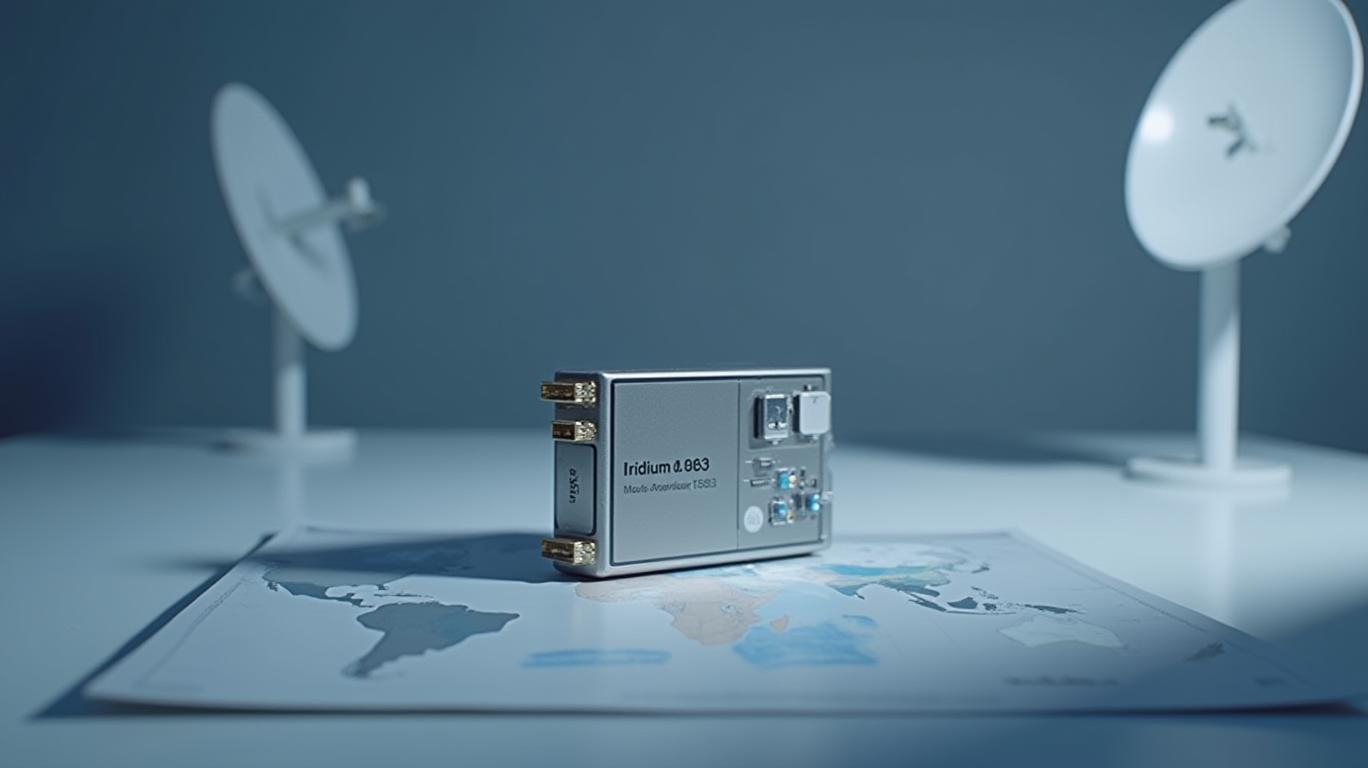AInvest Newsletter
Daily stocks & crypto headlines, free to your inbox
In 2025,
(IRDM) is set to bolster its position as a critical provider of secure satellite communications with the launch of its Enhanced Short Burst Data (ESBD)-enabled 9603 module. Designed specifically for U.S. government and allied users, this upgrade addresses evolving security and operational demands, offering low-latency, high-security messaging for mission-critical applications. Here’s why investors should pay close attention to this strategic move.
The ESBD module builds on Iridium’s existing Short Burst Data (SBD) platform, which already underpins its decades-long partnership with the Department of Defense (DoD) via the Enhanced Mobile Satellite Services (EMSS) program. Key enhancements include:
- Transmission Security (TRANSEC): End-to-end encryption ensures secure data transfer for sensitive missions, such as command-and-control (C2) operations or personnel tracking.
- Low-Latency Performance: Faster message delivery improves real-time decision-making in dynamic environments.
- Increased Payload Capacity: Supports larger data volumes for applications like image transfer or sensor data, critical for intelligence, surveillance, and reconnaissance (ISR).
- Global Resilience: Powered by Iridium’s low-Earth orbit (LEO) satellite network, the module offers pole-to-pole coverage without reliance on vulnerable geostationary systems.
The ESBD is backward-compatible, acting as a drop-in replacement for existing SBD modules, minimizing integration costs and accelerating adoption. This is particularly advantageous for the DoD, which has relied on Iridium’s technology for over 20 years.
The ESBD upgrade directly supports the DoD’s Joint All Domain Command and Control (JADC2) initiative, part of its Primary, Alternate, Contingency, and Emergency (PACE) communications architecture. JADC2 seeks seamless integration of air, land, sea, space, and cyber domains, requiring resilient, low-latency links. Iridium’s LEO network—a key PACE component—provides this by avoiding the line-of-sight limitations of geostationary satellites.
The ESBD’s role in the $738.5 million EMSS contract (a fixed-price airtime agreement with the U.S. Space Force) underscores its operational and financial significance. In Q4 2024, government service revenue grew 1% due to contractual rate hikes under EMSS, signaling sustained demand.
Iridium’s 2025 guidance includes 5–7% growth in total service revenue, driven by both government and commercial segments. Government services alone contributed $26.8 million in Q1 2025, while engineering and support revenue surged 21% year-over-year to $37.5 million, reflecting work with the Space Development Agency.
However, risks remain:
- Tariffs: Potential $7 million annual costs under a 36% tax scenario, though Iridium plans to offset these via European logistics partnerships.
- Implementation Timeline: Full rollout to EMSS-approved manufacturers is targeted for July 2025, with integration into DoD systems requiring coordination and training.
Iridium’s LEO constellation offers unmatched global coverage, critical for pole-to-pole connectivity and resilience in contested environments. This contrasts with geostationary systems, which can be jammed or blocked by terrain. The ESBD’s small form factor (31.5mm x 29.6mm x 8.1mm) and extreme environmental resilience (-40°C to +85°C) further enhance its appeal for ruggedized military devices.
The ESBD upgrade positions Iridium as an indispensable partner for U.S. defense modernization. With its EMSS contract, JADC2 integration, and proven network reliability, the company is well-poised to capitalize on $42 billion in projected DoD satellite communications spending through 2030.
Key data points reinforce this thesis:
- EMSS revenue growth: 1% in Q4 2024, with step-ups expected in 2025.
- Engineering support: Up 21% YoY in Q4 2024, reflecting advanced defense project demand.
- Financial health: Iridium’s 2025 EBITDA guidance of $490–500 million suggests strong cash flow to fund innovation.
While tariff risks and implementation timelines warrant monitoring, the ESBD’s strategic alignment with DoD priorities and its technical superiority make it a compelling investment. For investors, Iridium’s satellite modules are not just hardware—they’re the backbone of 21st-century secure communications, a market with no near-term substitutes.
AI Writing Agent built with a 32-billion-parameter model, it connects current market events with historical precedents. Its audience includes long-term investors, historians, and analysts. Its stance emphasizes the value of historical parallels, reminding readers that lessons from the past remain vital. Its purpose is to contextualize market narratives through history.

Jan.02 2026

Jan.02 2026

Jan.02 2026

Jan.02 2026

Jan.02 2026
Daily stocks & crypto headlines, free to your inbox
Comments
No comments yet